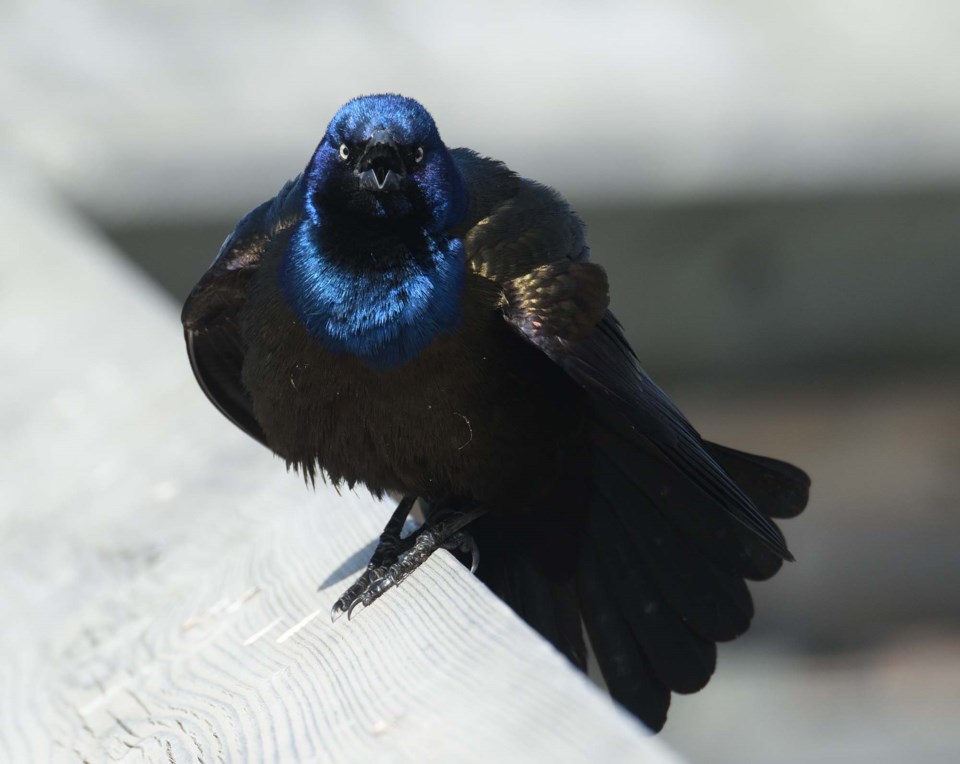Birdwatchers shall flock to Big Lake this weekend to celebrate the return of thousands of migratory birds to St. Albert.
The Big Lake Environment Support Society (BLESS) is celebrating World Migratory Bird Day this May 13. Nature fans from across Alberta will be at Lois Hole Centennial Provincial Park Saturday for a full slate of free bird-themed activities.
The theme of this year’s Migratory Bird Day is water and water conservation, said BLESS spokesperson Linda Brain. Wetlands and water bodies such as Big Lake are essential rest and refuelling stops for many migratory birds, which is why BLESS is working with municipal governments to protect Big Lake.
This year’s event features displays and activities at the Lois Hole Park shelter and along the John E. Poole wetland boardwalk, Brain said. Expect pond-dipping bug exploration with the City of Edmonton and citizen science projects by Wild Outside. Wildlife biologist Gordon Court is also expected to visit with his live peregrine falcon, Vinnie.
What’s back
Ducks Unlimited conservation specialist Bob Thomson said most of Alberta’s migratory birds have started to arrive in force this month, with some (such as the Swainson’s hawk) flying in from as far as South America.
“Big Lake is like a smorgasbord for water birds,” he said, which makes it easy to spot a wide variety of species.
The Gazette has spotted many migratory bird species at Big Lake in recent weeks. Some, such as the American coot and red-winged blackbird, will nest here and hang around until the fall. Others, such as American avocets, blue-winged and green-winged teals, and northern shovelers, will head further north after a short rest.
Thompson said Alberta should see its main rush of avocets in about a week, with most ruby-throated hummingbirds arriving in around May 20.
“You can almost set your watch to the ruby-throated hummingbird,” he said, as it has a very consistent migration time.
St. Albert birdwatcher Percy Zalasky reports seeing many birds arriving at Big Lake in recent weeks, including flocks of snow geese and thousands of sandhill cranes.
“The shorebirds and the warblers are just starting,” Zalasky said, with plenty of other species expected to arrive in the next two weeks.
“It’s an exciting time if you’re a birdwatcher.”
Water conservation
Big Lake is host to many of the 10 featured birds of World Migratory Bird Day, including the big-beaked northern shoveler (threatened by water pollution and the loss of coastal wetlands), American white pelicans (vulnerable to floods and human disturbance), ospreys (affected by plastic waste), and barn swallows (in sharp decline, likely due to falling insect populations).
“When I was a boy, I used to see millions of barn swallows,” Thomson said.
“Now, it’s a big deal if you see one or a pair.”
Thomson said people can help birds by preserving and restoring wetlands, adding that Ducks Unlimited runs programs to restore drained ones.
Zalasky said the best time to spot birds at Big Lake is in the early morning, as that is when birds that arrived overnight will be resting and feeding.
Thompson reminded birders to steer clear of any dead birds they find, as they may have avian influenza (which can infect humans). Birders who spot dead or seemingly dizzy waterfowl (particularly ducks, geese, swans, and gulls) or raptors should report them to Alberta Environment at 780-310-0000.
Migratory Bird Day activities run from 10 a.m. to 4 p.m. Visit the BLESS Facebook page for details.




